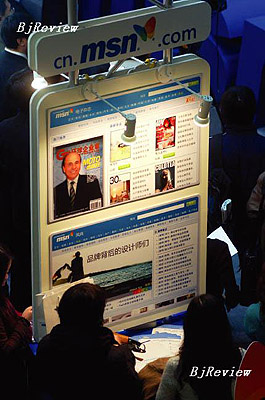
The past two years have been a golden time for Web 2.0 concept companies. Of all the venture capital invested in China last year-totaling $1.64 billion-about $100 million poured in electronic magazines, according to Yu Gan, CEO of Xplus, the first e-magazine website in China.
Acer, Lenovo Investment and China Merchants Group collectively invested $4.5 million in Xplus; IDG invested about $20 million in POCO, one of the largest e-magazine vendors in China; and Carlyle invested $10 million in ZCOM, the largest e-magazine operating platform in China.
An e-magazine can survive with just 50,000 readers, said Li Xiguang, professor of the School of Journalism and Communication at Tsinghua University. "Without the difficulties of securing publication license numbers and free from expenses for paper, printing and distribution, e-magazines usually operate at a very low cost," explained Li. "This is undoubtedly the main reason for the sudden, explosive growth of e-magazines in China."
Partly due to this low threshold, Chinese netizens can currently choose from a pool of more than 200 e-magazine websites. However, the Internet is an industry where winners are glorified and losers ignored-nobody remembers the pioneer e-magazines at their embryonic stage during the first Internet peak in 2000.
According to a recent study by Analysys International, an Internet-based business information service provider, there are bubbles in the current e-magazine market in China. Many operators falsify their revenue, readership and publication volume to attract advertisers and investors. According to Analysys International, the e-magazine industry in China is experiencing its peak of irrational expectations, and adjustment and integration are just around the corner.
At the China Internet Conference 2006, Li Yanhong, CEO of Chinese search engine Baidu, warned, "The biggest challenge with Web 2.0 is the lack of a business model."
TOM Online CEO Wang Leilei was even blunter. "Is there a Web 2.0 website with venture capital saying for sure it will exceed any of the currently U.S.-listed China concept stocks in revenue in two to three years?" Wang said. "None. Therefore, there must be bubbles in this industry."
How to identify a profitability model that will get high recognition from customers while boosting the company's development? How to survive in an industry where content is king? How to provide better services and win more loyal readers to the e-magazines? These are burning issues for e-magazine websites.
Finding successful models
Xplus CEO Yu had an exciting Spring Festival last year. Just prior to the holiday, Xplus beat the Founder Group and signed an electronic newspaper agreement with the Liaoning Newspaper Group. Three newspapers of the Liaoning Newspaper Group, Liaoning Daily, Liaoning Morning Post and Peninsular Morning Post, started offering electronic versions of their newspapers on the Xplus online platform to readers free of charge, adopting the single-click conversion software provided by Xplus. This was a new attempt for Xplus.
"We do electronic versions for magazines for free at a cost of approximately 6,000-8,000 yuan per magazine," said Xplus General Manager Xia Hong. "That means we need at least 200,000 yuan per month for a total of 300 magazines now on our platform." The high cost, together with an advertising model that failed to be recognized as a successful one, have become obstacles to the company's profitability.
"Venture capitalists want us to become profitable in a short time and we have to change the business model," said Yu, explaining the reason for putting e-newspapers on Xplus.
"To launch the e-newspaper business we acquired Shanghai Sunbird IT Co. Ltd., because they had the technology we use today," said Yu. The zero-threshold solution offered by Xplus to printed newspapers includes "single-click publishing" software called NPMAKER. The software seamlessly connects the newspaper digitalization process with the original newspaper typesetting process. This unifies all data formats and allows sharing in different departments of the newspaper, preventing from the overlapping of work.
"This is very significant to the implementation of our parallel strategies in developing e-newspapers and e-magazines," said Yu.
With the launch of e-newspapers, a new business model was born. From the fourth quarter of 2006 to the Spring Festival of 2007 (February 18), Xplus had signed agreements with 15 newspaper groups across the country.
However, just as Xplus discovered a workable business model, Founder Group, the long-standing e-newspaper leader, shot back. "Founder's solution used to be priced at 500,000-600,000 yuan when ours was around 100,000 yuan," said Yu. "Very quickly, Founder dropped its price to 300,000 yuan, and we began to provide our software for free." Reluctantly, Xplus abandoned its software sales.
